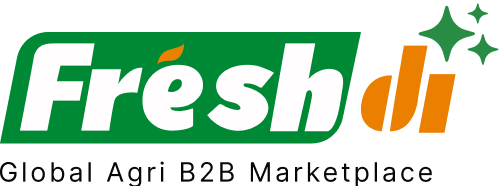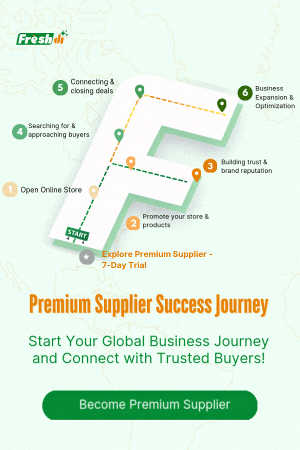Introduction – Current State of Play: The Basmati Rice Sector in Vietnam
Vietnam’s Basmati rice market is currently riding a wave of intense transformation. As of Q3 2025, several major developments have reshaped the landscape—some offering new opportunities, while others have introduced serious challenges.
Globally, rice prices have taken a hit. After India lifted its export restrictions in March 2025, the market was flooded with cheaper rice, pushing prices to five-year lows. This has directly impacted Vietnam, one of the top rice exporters, with its rice prices also falling due to oversupply. According to the FAO, global rice output reached a staggering 543.6 million metric tons, making it a buyer’s market for the time being.
At the same time, political and economic shifts are affecting demand. The Philippines—a key Vietnamese rice buyer—has frozen some of its contracts due to domestic price stabilization efforts. This has left around 350,000 metric tons of rice in limbo, causing further uncertainty in Vietnamese export figures.
On the policy front, Vietnam is fighting back. Prime Minister Pham Minh Chinh has called for tighter supply-demand management and is encouraging the development of climate-resilient rice varieties. These measures aim to stabilize pricing and protect farmers from market volatility.
And let’s not forget climate change. The Mekong Delta, Vietnam’s rice bowl, is facing rising sea levels, extreme weather, and salinity intrusion. These environmental threats are shrinking available farmland and affecting rice quality. In response, the government is investing heavily in climate-smart agriculture.
Despite these hurdles, the market isn’t all gloom and doom. Demand from China, Malaysia, and African countries remains strong. Vietnam is aiming to export 7.8 million tons of rice in 2025, with a renewed focus on high-quality Basmati varieties.
In such a whirlwind environment, staying ahead means staying informed. Platforms like Freshdi are proving invaluable, offering real-time market insights, supplier verifications, and updates on RFQ trends. Fast, informed decision-making has never been more critical.
Deep Dive – Breaking News: Critical Updates & Their Effects
Let’s talk about the game-changers that are actively reshaping the Basmati rice market in Vietnam.
First up: the global oversupply. When India re-entered the export scene earlier this year, it was like opening the floodgates. Prices plummeted, and Vietnamese exporters suddenly faced stiff competition. While this might seem like bad news for suppliers, it’s actually a great opportunity for buyers to secure premium Basmati rice at lower costs.
Then came the shock from the Philippines. One of Vietnam’s largest buyers hit the pause button on about 350,000 metric tons of rice imports, citing inflated contract prices. This has left Vietnamese suppliers scrambling to renegotiate or find alternative markets. It’s a red flag for exporters but also a sign for buyers to tread carefully and monitor trade policies closely.
Policy action in Vietnam has been swift. The government is doubling down on high-quality, low-emission rice varieties. This means suppliers who adapt quickly will gain a competitive edge. Investments in modern processing facilities and traceability technologies are ramping up, aimed at attracting high-end buyers from Europe and the Middle East.
Climate remains a wild card. With the Mekong Delta under threat, sourcing consistency could become an issue. Buyers may need to diversify their procurement strategies, considering multiple regions or even working with suppliers who invest in climate-resilient farming methods.
Freshdi’s role here is crucial. It tracks these developments in real-time and updates buyers on RFQ trends and supplier adaptability—so you’re not caught off guard by sudden shifts in policy or weather-related disruptions.
Top 4 Verified Basmati Rice Suppliers in Vietnam – Relevant in the Current Climate
In this fast-changing market, working with reliable, verified suppliers is non-negotiable. Based on export performance, certifications, global reach, and buyer reviews on Freshdi, here are the top 4 Basmati rice suppliers in Vietnam as of Q3 2025:
-
SOUTH MEKONG AGRICULTURAL FOOD COMPANY LIMITED
This company is a standout for its consistent export of Grade 1 Parboiled Basmati Rice to markets like the EU, US, UAE, and Africa. With a strong logistics network and excellent traceability, South Mekong is positioned for long-term growth. -
SUNRISE FOODSTUFF JOINT STOCK COMPANY
Known for its sortex-grade, high-quality rice, Sunrise Foodstuff has built a stellar reputation across Asia and the Middle East. Responsive to global price fluctuations and policy changes, they’re a go-to for buyers needing flexibility. -
RAT Rice Asia Trade
With a focus on premium bulk Basmati rice, RAT Rice Asia Trade has carved a niche in wholesale distribution. Their sourcing standards and transparent pricing make them a reliable partner in uncertain times. -
VILACONIC
VILACONIC offers both organic and conventional Basmati rice. Their ability to scale and deliver ready-to-export stock makes them a smart choice, especially when speed and volume are key.
Dynamic Ranking Note
Keep in mind, rankings are fluid. Platforms like Freshdi provide dynamic supplier insights such as “Suppliers of the Month/Quarter,” based on real-time metrics like delivery speed, buyer satisfaction, and RFQ responsiveness. This helps you stay aligned with top-performing partners as market conditions evolve.
Market Navigation – Strategic Responses to The Current Basmati Rice Landscape in Vietnam
So, what should businesses do now?
First, capitalize on low prices. With global oversupply, it’s a buyer’s market. If you’ve been holding off on large purchases, now might be the time to lock in favorable terms.
Second, diversify your supplier base. Given the uncertainty in major markets like the Philippines and the climate risks in the Mekong Delta, relying on a single supplier or region is risky. Use platforms like Freshdi to explore and verify alternative suppliers with stable production and export capabilities.
Third, focus on quality and traceability. With Vietnam pushing for high-quality, low-emission rice, suppliers that meet these standards are likely to benefit from government incentives and international demand. Aligning with such suppliers can future-proof your sourcing strategy.
Short-term, expect strong competition among suppliers, which means better deals for buyers. However, long-term, climate adaptation and policy compliance will separate the wheat from the chaff. Those investing in climate-smart practices and sustainable farming will become the industry’s backbone.
Freshdi allows you to track these trends and supplier certifications in real-time, helping you stay agile in your decision-making.
Conclusion – Key Takeaways for Businesses in a Fast-Moving Market
Let’s wrap it up.
The Basmati rice market in Vietnam is undergoing massive changes—some of them uncomfortable, all of them crucial. From price drops due to India’s export return, to political delays in the Philippines, to climate threats in the Mekong—this isn’t business as usual.
But turbulence creates opportunity. Buyers who understand the terrain, act quickly, and partner wisely will come out ahead. Verified suppliers like those highlighted above provide a strong starting point. And tools like Freshdi make it easier to stay informed, compare suppliers, and respond fast to RFQ changes or policy shifts.
If you’re sourcing Basmati rice in 2025, don’t just go with what worked last year. Adapt, verify, and move with the market.
Buyer’s Checklist – Sourcing Basmati Rice in Vietnam (Q3 2025 Edition)
- ✅ Monitor global price trends and trade policies (e.g., India’s exports, Philippines’ import delays).
- ✅ Use Freshdi to verify suppliers and track RFQ trends.
- ✅ Prioritize suppliers with climate-smart agriculture and traceability.
- ✅ Diversify sourcing regions to mitigate climate and political risks.
- ✅ Lock in prices while the market’s favorable for buyers.
Future Outlook
Looking ahead, Vietnam aims to position itself as a premium rice exporter. Expect more emphasis on sustainable farming, government support for high-value rice, and stronger trade ties with Africa and China. The Basmati segment will likely see a shift toward organic and specialty varieties, aligning with global health trends.
Platforms like Freshdi will continue to play a critical role—tracking supplier performance, updating on trade dynamics, and connecting buyers to the most adaptive and efficient partners.
FAQs
1. Why are Vietnamese Basmati rice prices lower in Q3 2025?
Because of India lifting its export ban, the global market is flooded with rice, pushing prices down across Asia—including Vietnam.
2. What makes Freshdi useful for sourcing Basmati rice?
Freshdi provides real-time supplier verification, market insights, RFQ updates, and dynamic rankings to help buyers make informed decisions.
3. Which Vietnamese supplier is best for bulk Basmati rice?
RAT Rice Asia Trade is highly rated for bulk premium Basmati rice with transparent pricing and reliable quality.
4. How is climate change affecting Vietnam’s rice production?
Rising sea levels, salinity, and extreme weather in the Mekong Delta are reducing yields and threatening long-term sustainability.
5. Is it a good time to buy Basmati rice from Vietnam?
Yes—current oversupply and falling prices create a favorable window for buyers, especially if they act fast and secure contracts at today’s lower rates.
References
- Global rice prices have hit a floor, but India’s supply glut will smother any gains – Reuters
- Philippine rice buyers delay 350,000 tons of Vietnamese cargoes – Reuters
- PM calls for efforts to balance rice supply-demand – VietnamNews
- Investing in Vietnam’s Climate-Smart Agriculture – ASEAN Briefing
- Rice exports set for rebound amid strong demand – DTINews


